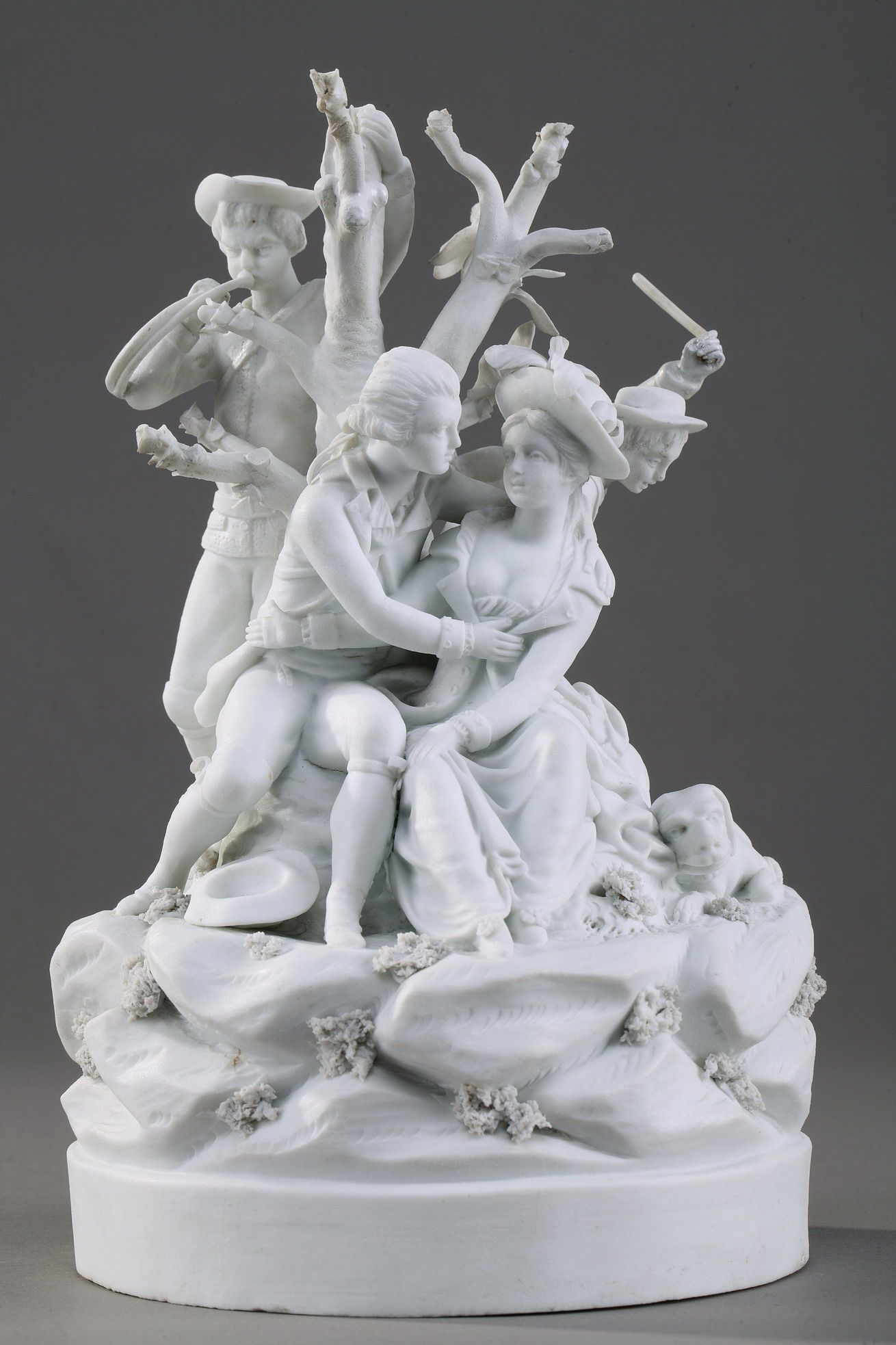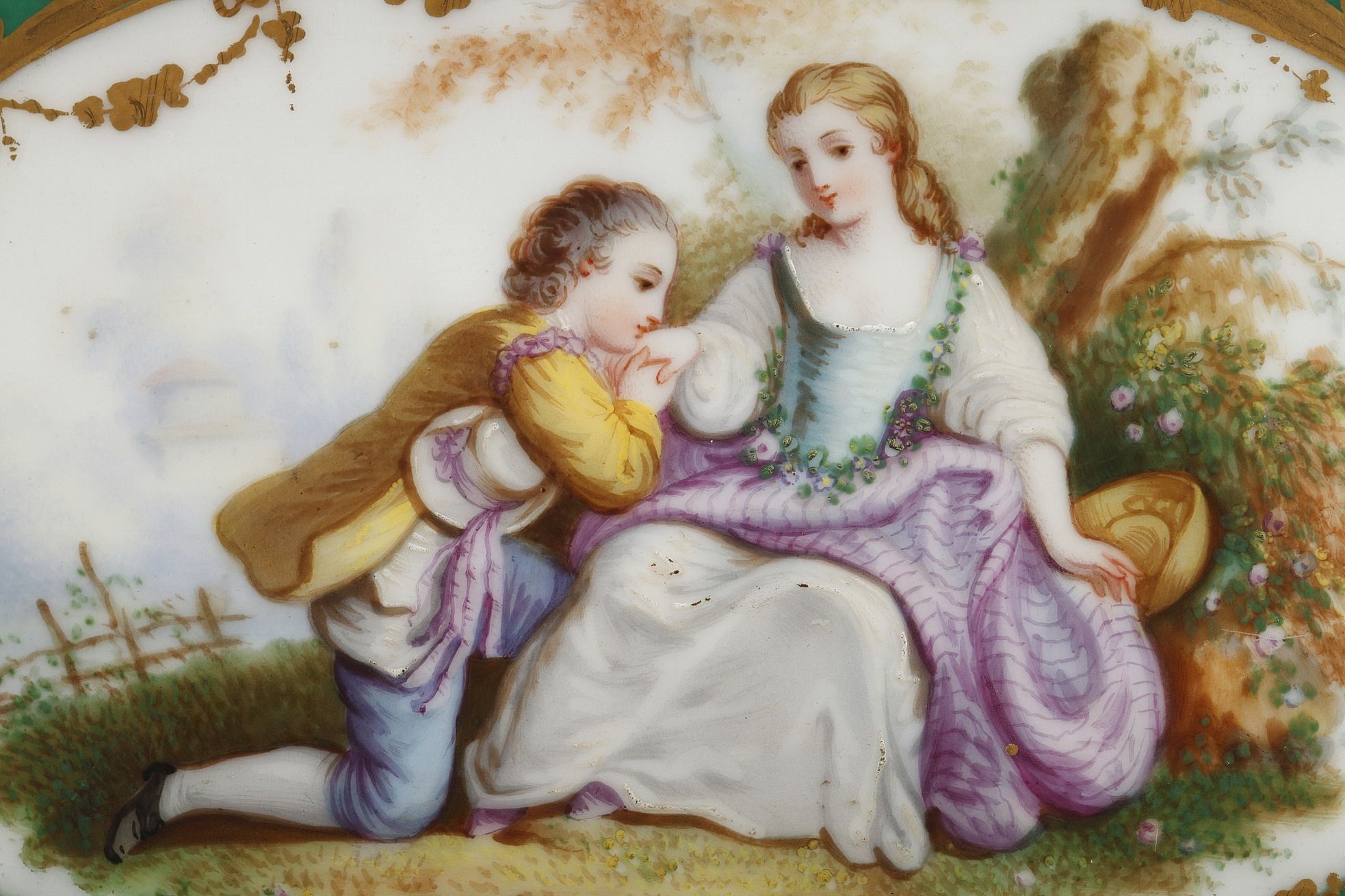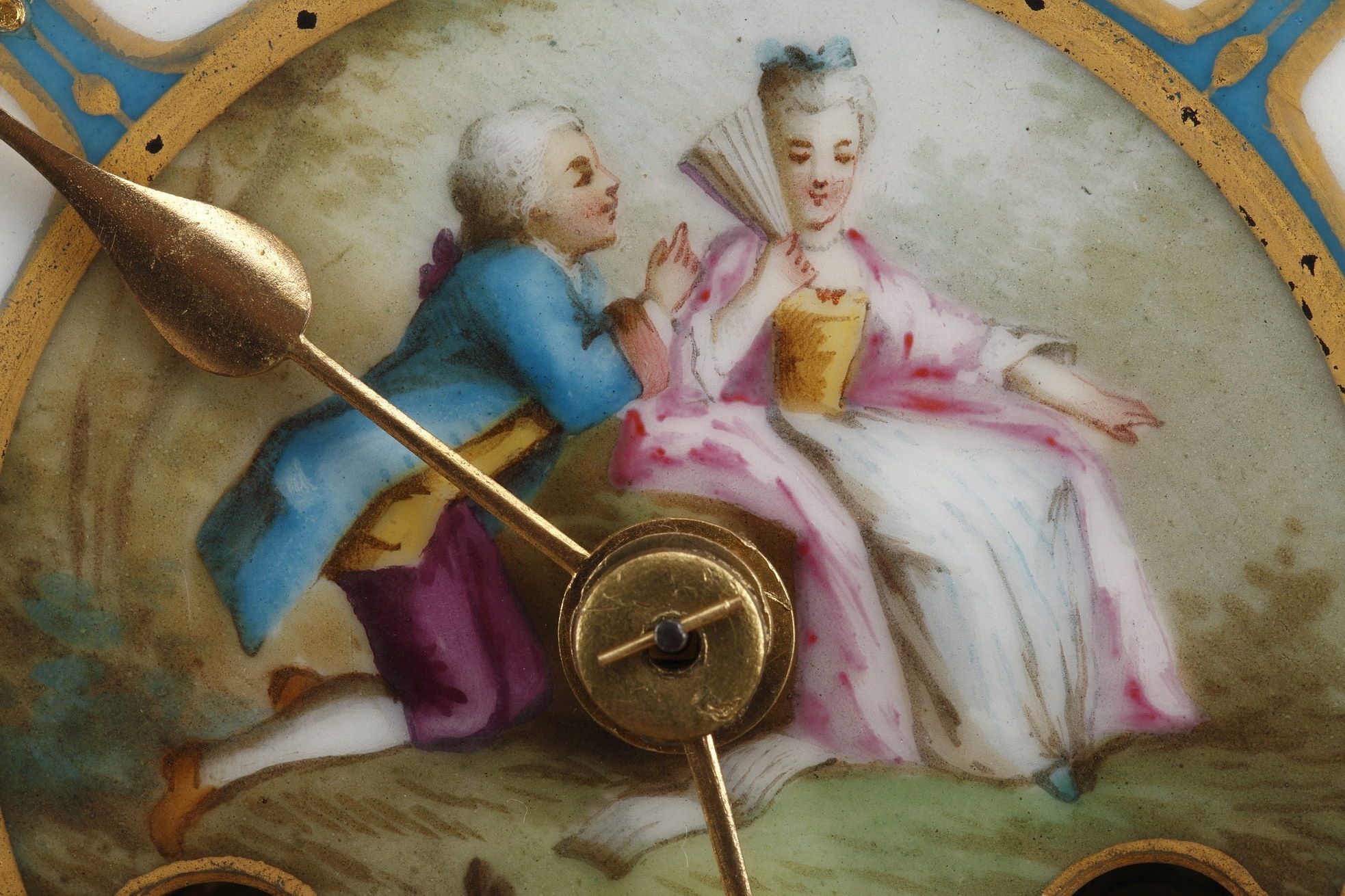You've probably already seen them, on Porcelain, painting or even tapestry, these gallant couples courting each other in the countryside. But who are they? Why are they sitting on the ground in such elegant clothes? Tired of the formality of the Baroque art of the previous period, we enter an era turned towards lightness. The court left Versailles for Paris, a place that was conducive to more freedom and joie de vivre, which encouraged love. Let's look back at the French 18th century, which saw "la vie en rose".
The "fête galante" as major art
In the 17th century, genre painting, a great Venetian and Flemish tradition, was considered minor. They were merely anecdotal scenes of everyday life that did not please the Academy. Love scenes had no place among the intellectual elite of the aristocracy. It was not until 1717 with the reception piece Pèlerinage à l'île de Cythère by Antoine Watteau (1684-1721) that things changed. The Academy, faced with his talent, refused to relegate him to a minor genre and decided to create the genre of the fête galante.
The idea is to depict a moment of social idleness among the aristocracy in a rural setting. Added to this is the strongly present notion of seduction. Antoine Watteau no longer depicts everyday life alone, but a lightness that appeals both to private individuals, from whom most of the funding comes, and to the government-appointed Académie des Beaux-Arts.
 Bisque hunting scene with gallant couple, 18th century
Bisque hunting scene with gallant couple, 18th century
But what distinguishes the fête galante from another scene of aristocratic life? The theme of passionate love in bucolic settings is a pretext for being bold and original in the composition of the work. The artists play on the modernity of the clothes while integrating them into the timelessness of the place. Watteau's works illustrate the fashions that were contemporary to him. Art historians will call the pleats in the back of French dresses of the period "Watteau's pleats" following his precise descriptions. These clothes show the high status of the protagonists. This allows the aristocrats to recognize themselves in these idle and delicate scenes.
There is also a strong emphasis on theatricality and doublespeak. Gallantry is adorned with sophisticated codes specific to the aristocracy. They made it possible to determine who belonged to good society and who was excluded, while the bourgeoisie began to have the means to blend in with the nobility. Being a gallant man meant knowing how to please in society by one's appearance, manners and wit. Everything is a pretext for gallantry, from the movement of a fan to the position of a beauty spot on a young woman's face. The codes are inscribed on everyday objects, from fans to the busks (a piece of wood inserted in the front of bodices to maintain their rigidity) of stays. This led to a very diverse education among aristocratic youth, but it remained superficial. This inspired the dandyism of the 19th century.
Antique ormolu and porcelain clock with gallant scene
Not all these parties were held indoors. It would be shocking to be too enterprising in a salon or at a ball. It is during walks outside, far from the obligations of etiquette, that love can be most enterprising.
"Pastorale" or loving each other in the open air
The reason for trying to get closer to nature is to show that you are educated and have read the writings of Jean-Jacques Rousseau (1712-1778). According to him, Man is good by nature and it is society that compromises him. Thus, those in society who are closest to nature are considered respectable. This leads to a sentimentalist view of the peasantry, which is considered purer. Illustrating shepherds is an opportunity to express the fate of feelings on people who are considered 'simple' and 'innocent'. Indeed, the aristocracy, too far removed from nature, is blamed for vanity and lust rather than fate.
This idea is not new: the pastoral was popularized in literature as early as the 3rd century B.C. by Virgil in Les bucoliques, but really took off during the Italian Renaissance. In France, it was Honoré D'Urfé (1607-1628) who brought the pastoral to light with L'Astrée in 1607. The novel describes the adventures of young men whose noble ancestors have chosen to escape the wars and live in hamlets on the banks of the Lignon.

Detail of a gallant scene on an antique porcelain and gilt bronze planter
The Pastoral theme in the visual arts arrived with François Boucher 's decorations for the Hôtel de Soubise in Paris in 1737-1738. Boucher created scenes of carefree, playful youth in an idealized image of peasant life. The shepherds and shepherdesses, dressed like lords and whose bare feet are never soiled, tend flocks requiring little care. They seem totally oblivious to the harsh conditions of rural life.
By surrounding ourselves with works representing this ideal society, educated but close to nature, we appropriate its virtues. Transposing a gallant scene into a bucolic landscape is a way of ensuring that the feelings expressed are well-founded.
This glorification of country life reached its apogee with Marie-Antoinette's hameau de la Reine. Marie-Antoinette commissioned Richard Mique to create a rural village with thatched cottages and a farm on the outskirts of the Trianon. The village features a barn, dairy, stable, pigsty and chicken coop. Legend has it that she "played the shepherdess", but this is not exactly the reality, as she used the area mainly as a place for strolling. Nevertheless, these buildings demonstrate the strong appeal of the rural world and its activities to aristocratic society.
The image of a Rococo lifestyle
After the death of Louis XIV, France aspired to a more relaxed atmosphere. Governed by a very strict etiquette and involved in numerous wars, the nobility took more freedom during the Regency (1715-1723) and morals became more relaxed. It was under the patronage of Mme de Pompadour, mistress of Louis XV, that the essence ofRococo art was defined. The colour palette became lighter, with shades of pink, blue and blond reflecting the joie de vivre of the court. Pink in particular, the colour of roses and of the goddess Venus, became more important to imitate the marquise who wore it at Versailles. Rococo became a lifestyle based on the refined pleasure of the senses and aesthetic satisfaction.
In this respect, the subject spread to all media. The Sèvres manufacture (a royal manufactury from 1759) used the engravings and subjects of François Boucher, a protégé of Madame de Pompadour, for its porcelain creations. The whiteness of the young women's complexions enhances the whiteness of the material. Between 1778 and 1797, a large number of pastoral themes are found in biscuits, small unglazed statuettes, which are used as table decorations. This was an opportunity to stimulate the imagination of the spectators and to lead to conversations between the guests. One notices both the richness of his host's décor and his ability to see beyond the innocent scenes.
Blue porcelain bowl in the Sèvres style, 19th century
For make no mistake, country romances are not just the preserve of true love. The second half of the 18th century saw the arrival of the notion of libertinage. The term had already been used in the 17th century, but it mainly represented freedom of thought and a certain inconstancy of amorous feeling. From the reign of Louis XV, a bon vivant and pleasure-loving king, it became synonymous with the pursuit of carnal pleasures. This led to a double language in the works, between seemingly chaste scenes and crude sexual connotations.
The flute-playing shepherds can show the ease of falling in love in a musical atmosphere surrounded by harmonious nature, as well as representing a sexual act for 18th century society. The play of looks sometimes gives way to explicit gestures or dishevelled clothing, as is the case on the Bisque hunting scene with a gallant couple from our collection.
The end of the party, the arrival of Neoclassicism
This pervasion of the aristocracy did not please everyone, and from 1750 onwards, we begin to see a movement in opposition to Rocaille art: Neoclassicism. Pastoral scenes continued to exist, but they took a more virtuous turn. Gone are the embracing lovers, the representations focus on the noble values of working the land. All that remains of the rocaille festivals is the décor of an idealised rural Arcadia , an image of ancient Rome. Jean-Honoré Fragonard (1732-1806), a virtuoso of bucolic love, bore the brunt of this change in taste. His series of paintings for the Château de Louveciennes of Madame du Barry, another of Louis XV's mistresses, depicting the stages of love, was returned to him. In its place, the commissioner hanged paintings by Joseph Marie Vien (1716-1809), which was much more neoclassical.
 Les bergers d'Arcadie clock, 19th century, detail
Les bergers d'Arcadie clock, 19th century, detail
In the 1780s, the rocaille style was totally rejected as too frivolous and decadent. Moralistic history painting took over from genre scenes. The color palette became darker and pink was abandoned in favor of red, considered more serious. After the archaeological discoveries of Pompeii and Herculaneum, a return to the sources of art was sought.




